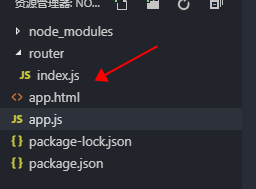node使用express路由router
node使用express路由router
// app.js 首页
const express = require('express');
const app = express();
const bodyParser = require('body-parser');
const mysql = require('mysql');
const router = require('./router/index') // 引入路由
// 开启数据库
const connection = mysql.createConnection({
host: 'localhost',
user: 'root',
password: '',
database: 'test',
multipleStatements: true, // 允许执行多条语句
})
connection.connect(() =>{
console.log('链接成功')
});
app.use(bodyParser.urlencoded({
extends: true
}));
//设置跨域访问
app.all('*', (req, res, next) => {
res.header("Access-Control-Allow-Origin", "*");
res.header("Access-Control-Allow-Headers", "X-Requested-With");
res.header("Access-Control-Allow-Methods", "PUT,POST,GET,DELETE,OPTIONS");
res.header("X-Powered-By", ' 3.2.1');
res.header("Content-Type", "application/json;charset=utf-8");
next();
});
// 使用路由 /index 是路由指向名称
app.use(`/index`,router)
//配置服务端口
var server = app.listen(3000, () => {
const hostname = 'localhost';
const port = 3000;
console.log(`Server running at http://${hostname}:${port}/`);
})
新建一个路由的文件夹,并且新建一个index.js的文件

const express = require(`express`)
const router = express.Router()
router.use((req, res, next) => {
console.log(`路由执行成功啦~~~`, Date.now());
next()
})
router.get(`/`, (req, res, next) => {
res.json({
status: 200,
data: `请求成功`
})
})
router.get(`/data`, (req, res, next) => {
res.json({
status: 200,
data: [1, 2, 3, 4, 5, 6, 7]
})
})
module.exports = router
下面可用通过请求测试路由
http://localhost:3000/index/data
或者
http://localhost:3000/index
/index/data 和 /index 两种方法都可以访问
大功告成啦~~~
接下来可用根据自己项目需求分出多个模块,建立不同名称的文件来管理不同的路由请求。




 浙公网安备 33010602011771号
浙公网安备 33010602011771号